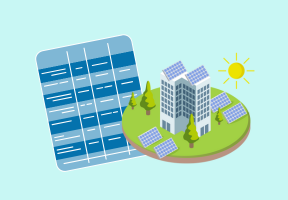World Energy Consumption in 2024
10 min read
Global consumption continues to rise, with growth of 1.8% between 2023 and 2024, according to the Statistical Review of World Energy. This is more than the increase observed between 2014 and 2024, which was only 1.3% over ten years. This increase is mainly due to growing demand for electricity, which jumped by 4% (compared to 2.6% over the previous ten years). This demand was mainly met by nuclear and . It should also be noted that the curves are often impacted by major global crises, which have the effect of slowing growth. These are generally followed by a period of “catch-up” that pushes the figures back up again. This was the case in 2020 with the COVID-19 health crisis and previously with the 2008 financial crisis.
Which Energy Sources Were Consumed the Most?
On the podium, oil still occupies first place, accounting for 33.6% of global primary energy consumption.
Coal (27.9%) remains in second place. It should be noted that its consumption is declining in OECD countries but increasing in emerging countries, particularly in China and Indonesia.
Finally, natural gas (25.1%) ranks third and is growing steadily.
Next come nuclear power and renewable energies (hydropower, wind power, solar power, bioenergy), which have the advantage of being largely carbon-free.
How is Consumption Distributed?
Here is a comparative table of consumption by source in 2019 and 2024:
| Global in 2019 (% of Total Consumption) | Global energy mix 2024 (% of Total Consumption) | |
Oil | 33.1% | 33.6% |
Gas | 24.2% | 25.1% |
| 27.0% | 27.9% |
Nuclear | 4.3% | 5.2% |
Hydropower | 6.4% | 2.7% |
Other renewables (wind, solar, etc.) | 5.0% | 5.5% |
The “ performance” of the top three fossil fuels have not changed much in the last five years. Behind them, renewable energies such as solar and wind power have grown by 10% and compensated for hydroelectricity, which has experienced difficult years due to increasing droughts in many regions of the world.
The Vast Inequalities in Consumption
The more a country develops, the more per capita energy demand increases.
China is by far the world's largest energy consumer. However, it ranks only 42nd in terms of per capita energy consumption, far behind Qatar, Singapore, and the United Arab Emirates, the top three countries. The United States ranks 10th.
The table below shows these disparities in per capita consumption:
Countries - regions | Per capita consumption (in gigajoules) |
% of global consumption
|
China | 112 | 26.8% |
India | 26.7 | 6.5% |
Africa | 13.9 | 3.6% |
Europe | 105 | 12.1% |
United States | 266 | 15.5% |
• Per capita consumption in the United States is almost 20 times higher than that of an African.
• The Chinese population is four times larger than that of the United States, but their per capita consumption is less than half.
• Consumption per capita in China remains lower than in Western Europe, but the gap is narrowing. The table above includes countries such as Turkey and Ukraine in Europe, which lowers per capita consumption and allows China to move ahead.
Importance of Lifestyles
If we look at consumption per capita, we can clearly see that the living standards and level of development of a country play a big role. Lifestyles are constantly changing in developed countries, where people are spending less on clothing and food, but more on communications, health, transportation and leisure activities – all of which are very energy intensive.
Energy Consumption and the Environment
Higher consumption means more energy used, more CO2 emissions, more waste and more pollution. It is up to both individuals and governments to take responsibility, as consumption is partially responsible for environmental degradation. Individuals can change their consumption habits, and governments can take actions such as enacting laws on the , fighting against planned obsolescence and changing the energy mix.
Combating Fuel Poverty
The difference in consumption per capita is also observed within single countries. For example, some people with low incomes suffer from fuel poverty. Their governments could introduce certain measures to help, such as reduced rates for low earners, grants, and subsidies for energy expenses and home renovations.
What Does the Future Have in Store for Energy?
The Executive Director of the , Fatih Birol, stated in his 2024 report: “In the history of energy, we have seen the coal era and the oil era, and we are now rapidly entering the era of electricity.” According to him, this era will be increasingly based on clean sources of electricity. Over five years, the evolution of the electricity mix has been moving in this direction. The share of wind power has increased by 50% and that of solar power by 150%.
Here is the electricity production by energy source in 2019 and 2024:
Electricity mix worldwide 2019 (% of total consumption) | World electricity mix 2024 (% of total consumption) | |
Oil | 3.1% | 2.2% |
Gas | 23.3% | 22.4% |
Coal | 36.4% | 33.9% |
Nuclear | 10.4% | 9% |
Hydropower | 15.6% | 14.2% |
Wind | 5.3% | 8% |
Solar | 2.7% | 6.8% |
Others* | 3.3% | 2.5% |
* energy, , waste, and other renewable energy sources.


















